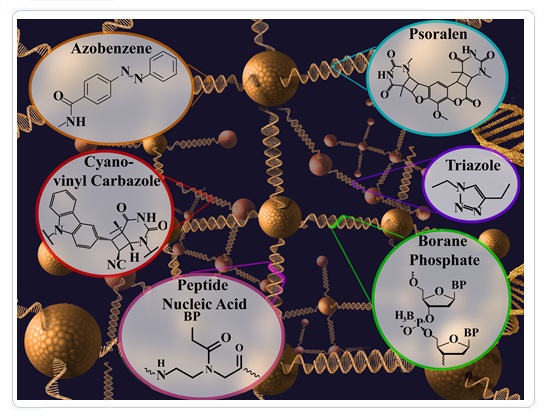Publications
Table of Contents (TOC)
Chemically modified nucleic acids and DNA intercalators as tools for nanoparticle assembly
Chem. Soc. Rev. 2021, 50(23), 13410–13440. doi: 10.1039/D1CS00632K

Abstract
The self-assembly of inorganic nanoparticles into larger structures is of great research interest, as it allows the fabrication of novel materials with collective properties correlated to the nanoparticles' individual characteristics. Recently developed methods for controlling nanoparticle organization have enabled the fabrication of a range of new materials. Among these, the assembly of nanoparticles using DNA has attracted significant attention due to the highly selective recognition between complementary DNA strands, DNA nanostructure versatility, and ease of DNA chemical modification. In this review, we discuss the application of various chemical DNA modifications and molecular intercalators as tools for the manipulation of DNA–nanoparticle structures.Specifically, we examine how DNA modifications and small molecule intercalators have been employed in chemical and photochemical DNA ligation in nanostructures; DNA rotaxanes and catenanes associated with reconfigurable nanoparticle assemblies; and DNA backbone modifications, including locked nucleic acids, peptide nucleic acids, and borane nucleic acids, which affect the stability of nanostructures in complex environments.We conclude by highlighting the importance of maximizing synergy between the communities of DNA chemistry and nanoparticle self-assembly to enrich the library of tools available for nanostructure manipulation.
For citation:
De Fazio, A. F.; Misatziou, D.; Baker, Y.; Muskens, O. L.; Brown, T.; Kanaras, A. G.
"Chemically modified nucleic acids and DNA intercalators as tools for nanoparticle assembly"
Chem. Soc. Rev. 2021, 50(23), 13410–13440. doi: 10.1039/D1CS00632K